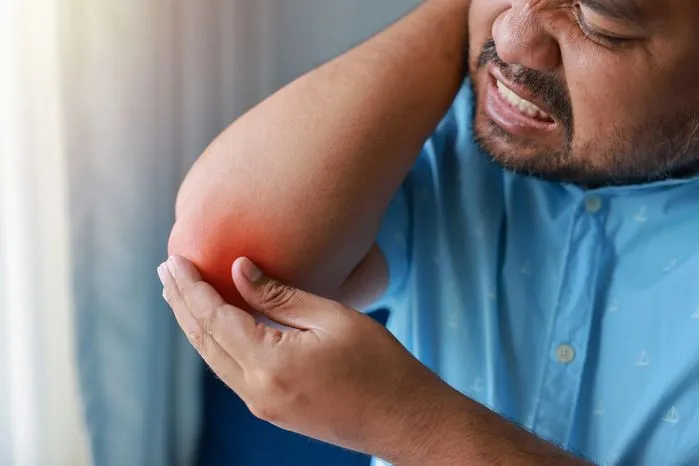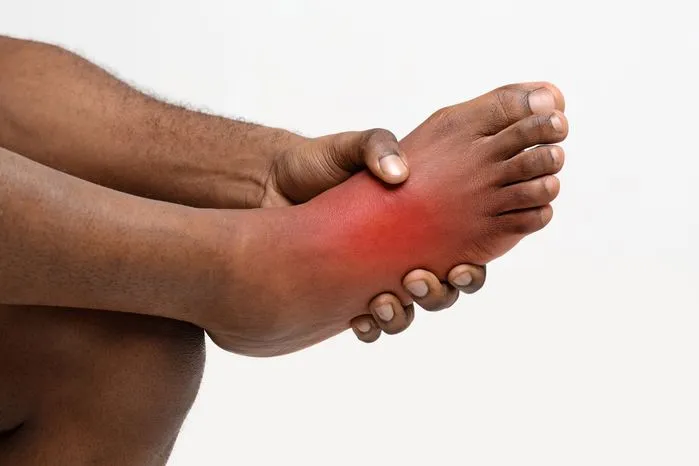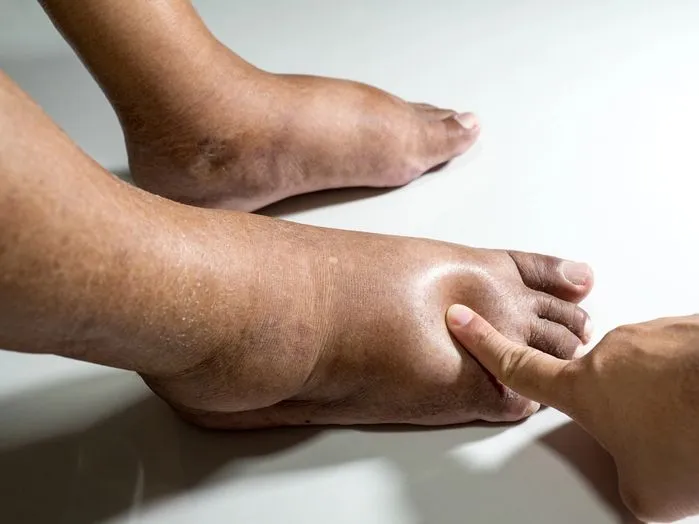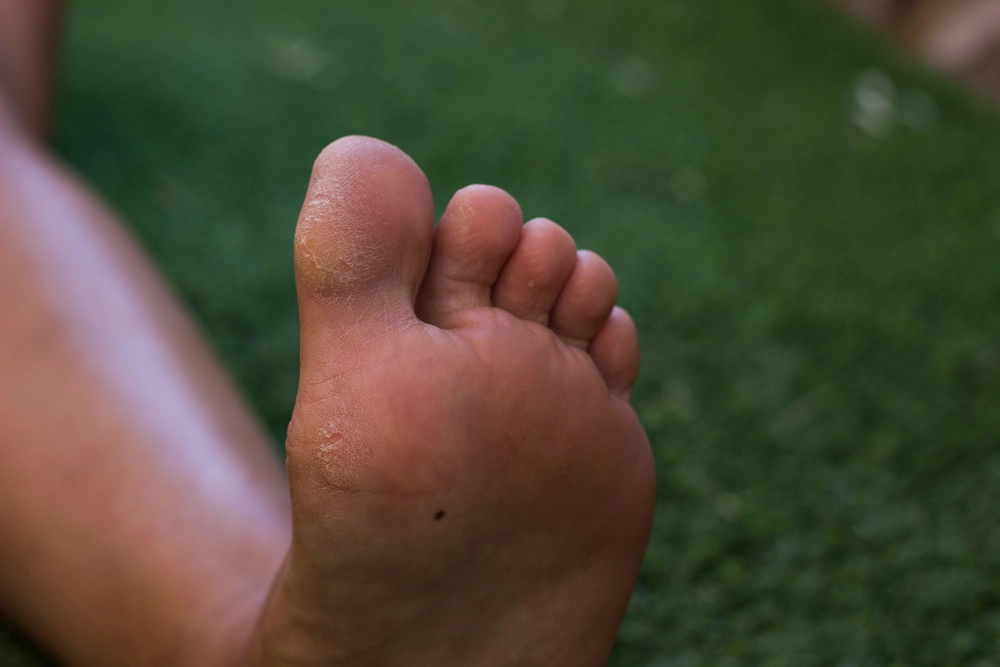
What Is Athlete’s Foot? Expert Insights from The Releford Foot and Ankle Institute
At The Releford Foot and Ankle Institute, we’ve treated countless patients struggling with persistent itching, peeling skin, and discomfort between their toes—often unaware that they have athlete’s foot (tinea pedis), a highly contagious fungal infection. While commonly associated with athletes, anyone exposed to warm, damp environments like locker rooms, pools, or tight shoes can develop this stubborn condition.
💡 Key Insights from Our Podiatry Experts:
✔️ Athlete’s Foot Isn’t Just an Itchy Rash – If left untreated, it can lead to deep cracks in the skin, secondary bacterial infections, and chronic recurrence.
✔️ Fungal Infections Thrive in Certain Conditions – We frequently see cases in patients who wear tight shoes, have excessive foot sweating, or walk barefoot in public places.
✔️ Early Treatment Prevents Long-Term Complications – Many patients attempt over-the-counter creams but don’t fully eradicate the fungus, leading to repeated infections and toenail involvement.
🔍 How We Treat Athlete’s Foot Effectively:
Targeted Antifungal Therapy: Prescription-strength topical or oral antifungals for stubborn infections.
Moisture Control & Foot Hygiene: Custom treatment plans to prevent recurrence through better foot care.
Advanced Care for High-Risk Patients: Special precautions for diabetics and individuals with circulation issues, who face higher risks of complications.
At The Releford Foot and Ankle Institute, we go beyond symptom relief—we focus on eliminating the root cause of athlete’s foot and preventing reinfection. This guide explains how the infection spreads, what symptoms to watch for, and the best treatment strategies for long-term foot health.
Key Takeaways
- This condition represents a prevalent fungal infection that mainly affects skin areas between toes.
- This condition presents symptoms such as itchy, reddened skin, often paired with burning sensations, peeling, or cracking.
- Such fungi find warm, damp environments like footwear or public showers ideal for thriving, thereby raising transmission risks.
- To treat this infection, application of topical antifungal creams, lotions, or sprays is necessary. In extreme cases, prescription strength or systemic medications may be required.
- Regular washing and drying of feet, shoe hygiene maintenance, along with utilizing protective footwear in shared spaces, serve as effective preventative measures.
Understanding Athlete's Foot
Warm, damp environments like inside footwear or public shower floors are breeding grounds for infections like Athlete's Foot. These fungi invade the kin, disrupt its natural shield, and produce various symptoms. Infection might cause skin to peel, crack, or bleed, which can lead to secondary bacterial infections.
Symptoms typically remain localized to feet. However, in worst-case scenarios, these infections spread to other body parts, increasing health risks.
"Athlete’s foot thrives in warmth and moisture, making your toes its favorite hideout. Understanding this stubborn fungus is key to prevention, treatment, and keeping your feet healthy and itch-free."
Causes and Risk Factors
Personal hygiene habits also weigh into risk assessment for this skin condition. Keeping feet dry, regularly changing socks, and shunning tight, closed-toe footwear can mitigate your chances of infection. Those with compromised immune systems or diabetes face higher risk as their bodies could struggle to combat the fungus.
Interestingly, men face a higher risk of Athlete's Foot than women, with age further increasing this likelihood. Another contributory factor is a history of this ailment as well as close contact with an infected person.
Recognizing Symptoms
Identifying Athlete's Foot symptoms proves essential in its early management and prevention of further spread. Symptoms differ greatly among individuals, yet certain signs often present themselves. Itchy skin stands out as a recognizable symptom, particularly between toes. This fungal infection tends to initiate between the smallest toes, from where it usually extends to the whole foot if not promptly addressed.
Four primary signs help in identifying this condition:
1. Rash that's itchy and scaly: Usually, the discomfort accompanies this symptom, which starts between the toes.
2. Blisters or ulcers: Skin might blister or ulcerate in some situations. Caution is advised while treating these as secondary bacterial infections could occur.
3. Peeling, dry skin: Often observed on feet sides, and soles, skin appears cracked or peeling.
4. Toenails that are discolored and thickened: Fungal infections extending to nails can cause discoloration, thickening, and even crumbling.
Early recognition of these symptoms assists in managing the Athlete's Foot, besides preventing its spread to other body parts or individuals.
Treatment Options
Numerous effective treatments exist for Athlete's feet. Topical remedies, typically first in line, are directly applied to the affected skin. Creams, lotions, or sprays, containing antifungal agents that kill the causal fungus are common forms of these products. Over-the-counter options abound, with prescription-strength topical medication available for severe or persistent cases.
Medications with antifungal properties can also be ingested. These systemic treatments, through the bloodstream, reach and combat the infection. Generally, their use is reserved for cases where topical remedies fail or when the infection is extensive. Remember, such medications may have side effects and interactions, hence supervision by a healthcare provider during their intake is advised.
Preventive Measures
Without a doubt, the best strategy against Athlete's Foot lies in prevention. With consistent, proactive measures, one can significantly lower the risk of this pesky fungus taking root in your toes. Methods ranging from home remedies to footwear cleanliness can help fend off Athlete's Foot.
1. Promote Foot Cleanliness: A routine of washing your feet, followed by thorough drying, especially between the toes, aids in keeping fungus at bay.
2. Maintain Shoe Hygiene: Wearing fresh, dry socks paired with alternating between different pairs of shoes ensures ample drying time. Refrain from borrowing footwear from others.
3. Apply Antifungal Products: Powders and sprays available over the counter can serve as preventive weapons. Apply them directly onto your feet or inside your shoes and socks.
4. Safeguard Your Feet in Public Spaces: Fungal hotspots include communal areas like gym showers or swimming pools. Wearing flip-flops or shower shoes in these settings is highly advisable.
Supporting Facts and Statistics
According to the Centers for Disease Control and Prevention (CDC), fungi that cause athlete's foot spread in warm, dark, and moist areas, especially between the toes. Washing and drying feet properly reduces the risk of infection.
The National Library of Medicine stated that an athlete's foot, or tinea pedis, spreads easily and affects the feet. Fungi thrive in warm, moist areas, especially between the toes. Common symptoms include itching, burning, and cracked skin. Damp surfaces in public showers, pools, and locker rooms increase the risk of infection.
In addition, the National Library of Medicine emphasized that practicing good foot hygiene reduces the risk of athlete's foot. Washing with soap and water, drying between the toes, and wearing breathable shoes help prevent infection. Using sandals or flip-flops in public showers and pool areas minimizes exposure to fungi.
Releford Institute’s Opinion on Athlete's Foot
This condition flourishes in environments that are warm, and moist, especially in areas between toes. Identifiable symptoms include skin that peels, burns, or itches. Treatment options include maintaining excellent hygiene practices or administering antifungal medication. At RelefordInstitute.com, we believe that comprehending how this common foot condition operates is vital for optimal foot health.
Frequently Asked Questions
How do you make an athlete's foot go away?
To make an athlete's foot go away, you need to apply topical antifungal creams, sprays, or powders that you can buy over the counter. You should wash your feet daily and dry them thoroughly, especially between the toes. It's also important to change your socks regularly and wear shoes that allow your feet to breathe.
What triggers an athlete's foot?
Athlete's foot is triggered by a fungus that thrives in warm, wet environments like showers, swimming pools, and locker rooms. Wearing damp socks or shoes and sharing items like towels or shoes with an infected person can also trigger the condition.
What can be mistaken for an athlete's foot?
Several conditions can be mistaken for athlete's foot, including psoriasis, eczema, and dermatitis. These conditions can cause similar symptoms such as itchy, dry, and peeling skin, but they require different treatments.
How do I cure my athlete's foot naturally?
To cure your athlete's foot naturally, soak your feet in a mixture of vinegar and water. You also need to keep your feet dry and clean, change your socks regularly, and wear shoes that let your feet breathe. Eating a healthy diet and practicing good hygiene also helped in the healing process.
Does hydrogen peroxide cure an athlete's foot?
Hydrogen peroxide can help cure an athlete's foot by killing the fungus that causes the condition. However, it should be used with caution as it can cause skin irritation and damage if used in high concentrations or for extended periods.
Should I wear socks to bed with an athlete's foot?
If you have an athlete's foot, wearing socks to bed can help contain the fungus and prevent it from spreading to other parts of your body. However, you should make sure the socks are clean and dry to prevent creating a damp environment that encourages fungal growth.
How to get rid of foot fungus overnight?
Getting rid of foot fungus overnight is unlikely as it typically takes several weeks to clear up with treatment. However, you can start the healing process by applying antifungal creams or sprays, keeping your feet clean and dry, and avoiding walking barefoot in communal areas.
How long is an athlete's foot contagious?
An athlete's foot is contagious as long as the fungus is present. This means it can spread to other people through direct contact or by touching surfaces contaminated with the fungus. Therefore, it's essential to treat the infection and avoid sharing personal items like shoes and towels.
What is the number one cure for athlete's foot?
The number one cure for athlete's foot is antifungal medication. These come in the form of creams, sprays, powders, and sometimes pills, and they work by killing the fungus that causes the infection.
Does vinegar stop an athlete's foot?
Vinegar can help stop an athlete's foot by creating an acidic environment that inhibits the growth of the fungus. Soaking your feet in a mixture of vinegar and water can help speed up the healing process.
How long will the Athlete's Foot take to heal?
An athlete's foot can take anywhere from a couple of weeks to a few months to heal, depending on the severity of the infection and how diligently you follow your treatment regimen.
What is the main cause of an athlete's foot?
The main cause of an athlete's foot is a fungus called tinea pedis. It thrives in warm, damp environments and can be contracted by walking barefoot in communal areas, wearing damp shoes or socks, or sharing personal items with an infected person.


















